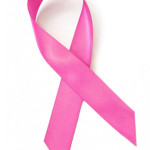 I’m about week late on this, but I’m still disturbed by the news reports about Angelina Jolie’s “preventative mastectomy” and I still haven’t seen much out there adequately explaining BRCA genes and cancer risk.
I’m about week late on this, but I’m still disturbed by the news reports about Angelina Jolie’s “preventative mastectomy” and I still haven’t seen much out there adequately explaining BRCA genes and cancer risk.
The media keeps saying that lab tests showed Jolie had the BRCA 1 gene, and that in the presence of these genes, one’s risk of developing breast or ovarian cancer may be raised as high as 87%. The only place I’ve been able to find that number is on the website of the company that created the test, Myriad Genetics.
9% of breast cancers are attributed to a direct family history (mother, sister, or daughter) of breast or ovarian cancer, especially in multiple generations. Only about 5% of all breast cancer cases are associated with BRCA 1 and 2 genes, which are also associated with some ovarian and colon cancer. Absence of these genes does not indicate an individual has a decreased risk of cancer, although their presence is associated with an increased risk. It may be good to know if you have the genes if you have a strong family history of cancer, but 20-35% of people who test positive for the genes do not develop cancer, a far cry from what the media has implied.
Angelina Jolie did also have an immediate family member with cancer and the rest of her medical history is between her and her doctor, but going public about her decision now so other women know about the test leads me to believe she was somewhat misinformed. If her decision was based solely on what has been reported, I can’t say it sounds like a “preventative” mastectomy was the most reasonable treatment option, and I would have wanted a second opinion on what constitutes proactive, preventative healthcare.
While only 9% of breast cancer cases are correlated with family history and 5% to BRCA genes, 90% are attributed to environmental and nutritional factors. Risk factors include ionizing radiation, DDT and pesticide exposure, xenoestrogen exposure, early and prolonged use of birth control pills, estrogen dominance, smoking and second-hand smoke, obesity (especially weight gain during adulthood), a diet high in sugar and fat, insulin-resistance, excessive alcohol intake, having no children or having one’s first child after 30, early menstruation, late menopause, and prolonged hormone replacement therapy and antibiotic use.
It’s likely that the genes responsible for estrogen metabolism influenced by environmental factors are responsible for a far greater number of breast cancers than the BRCA genes. Most individuals with breast cancer are estrogen dominant. Since 1974, the incidence of breast cancer has nearly doubled, and the number of breast cancers that were estrogen-receptor positive has jumped from 33% to 66%.
Therefore, a more valuable indicator of breast cancer risk is to look at the endocrine system to see if your hormones are in proper balance and to make sure your liver is able to efficiently detoxify your body.
There are three types of estrogen and their ratio may be the most important factor in assessing breast cancer risk. Just as when assessing ratios of “good” and “bad” cholesterol, a proper diet, supplementation, and lifestyle modifications can balance hormones and cultivate a more optimal estrogen ratio. A poor estrogen ratio has also been associated with other types of cancer, autoimmune diseases, obesity, infertility, and other health problems. Because hormones can’t do their jobs well if any become out of balance, it is also important to look at progesterone, testosterone, cortisol and insulin levels. Maintaining healthy blood sugar is important because elevated insulin levels will inhibit the body’s ability to process and clear estrogen.
If you have a first degree relative who had pre-menopausal breast cancer, you should begin screenings with thermography (preferable to mammogram if you’re under 50), mammogram, or ultrasound ten years before the age they were diagnosed. Self breast exams should be every other month after age 20, and monthly after age 30.
Vitamin D deficiency is very common and maintaining proper levels has been found to decrease breast cancer risk by half. Similar results have been found with other types of cancer. Also, consuming 1 1/2 cups of cruciferous vegetables per day has been shown to decrease breast cancer risk by 25%. Kale, broccoli, cabbage, and brussels sprouts form substances that regulate estrogen metabolism. Drinking green tea has also been found to significantly decrease risk.
Genetics alone are not a major determinant of cancer risk and there are options for preventative care. The value of genetic testing for breast cancer has been exaggerated in the media and there are many ways to take control of your health and be proactive in cancer prevention other than removing healthy breasts, including getting adequate nutrition, supplementation, lifestyle modifications, reducing toxic load, and getting regular screenings.
Resources:
Cabeca, Anna, D.O. (Featured Speaker). 2008. “Screening for Breast Cancer Risk”. Podcast audio program. Designs for Health, September 10.
Murray, Rebecca, A.P.R.N., M.S., F.N.P., C.D.E. (Featured Speaker). 2010. “The Insulin-Estrogen-Cancer Connection”. Podcast audio program. Designs for Health, May 12.
Designs for Health. “Reduce Your Risk of Breast Cancer.” Designs for Health. PowerPoint. 21 May 2013.
Grisandi, Ronald, D.C., D.A.B.C.O., D.A.C.B.N., M.S. Estrogen Dominance

